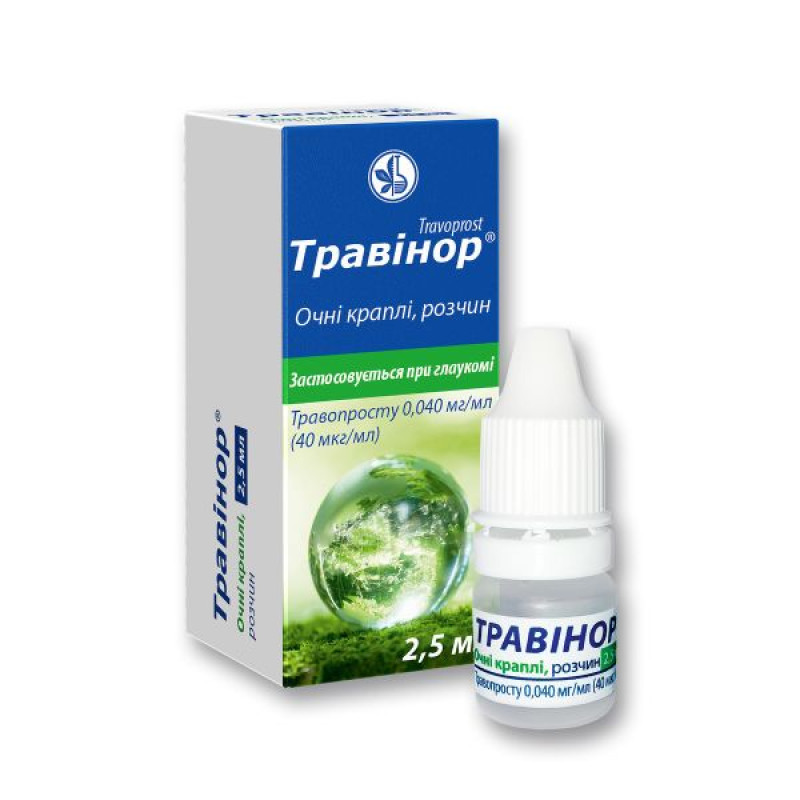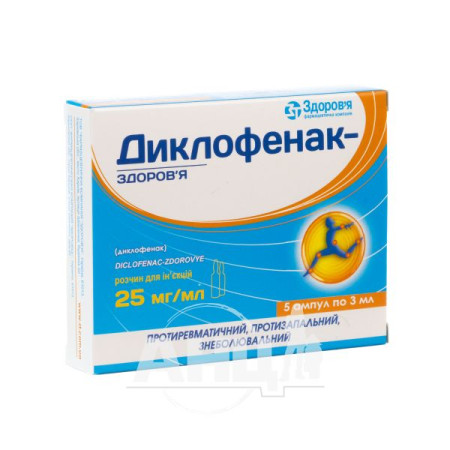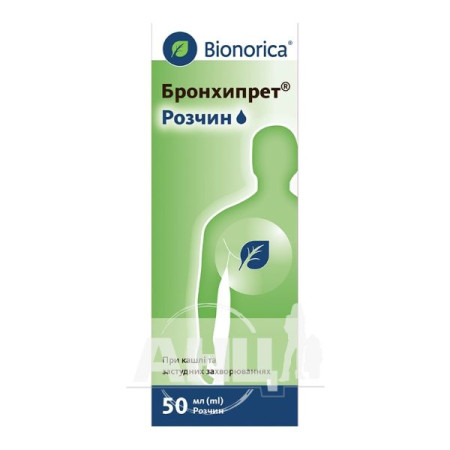Travinor eye drops solution 0.04 mg/ml bottle 2.5 ml

Instructions for use Travinor eye drops solution 0.04 mg/ml bottle 2.5 ml
Composition
active ingredient: travoprost;
1 ml of solution contains 0.040 mg (40 mcg) of travoprost;
excipients: benzalkonium chloride, macrogol-15-hydroxystearate, trometamol, boric acid, disodium edetate, mannitol (E 421), 1 M sodium hydroxide solution or 1 M hydrochloric acid solution, water for injections.
Dosage form
Eye drops, solution.
Main physicochemical properties: colorless transparent aqueous solution.
Pharmacotherapeutic group
Means for use in ophthalmology. Antiglaucoma drugs and miotics. Prostaglandin analogues. ATX code S01E E04.
Pharmacological properties
Pharmacodynamics.
Mechanism of action. Travoprost, a prostaglandin F2a analogue, is a full, selective agonist of prostaglandin F2a, which has a high affinity for prostaglandin FP receptors, and reduces intraocular pressure by increasing the outflow of aqueous humor through the trabecular meshwork and uveoscleral pathways. The reduction in intraocular pressure in humans begins approximately 2 hours after administration, and the maximum effect is achieved after 12 hours. The significant reduction in intraocular pressure with a single dose can be maintained for more than 24 hours.
Clinical efficacy and safety. In clinical studies, patients with open-angle glaucoma or ocular hypertension who received travoprost once daily in the evening experienced a reduction in intraocular pressure of 8–9 mmHg (approximately 33%) from a baseline of 24–26 mmHg. Clinical studies also have data on the combination of travoprost with timolol 0.5% and some data on the combination with brimonidine 0.2%, which demonstrated an additive effect of travoprost when used with these antiglaucoma drugs. There are no clinical data on the concomitant use of travoprost with other ophthalmic antihypertensive drugs.
Secondary Pharmacology: Travoprost significantly increased optic disc blood flow in rabbits after 7 days of topical ocular administration (1.4 micrograms once daily).
Children: The efficacy of travoprost in children aged 2 months to 18 years was demonstrated in a 12-week, double-blind clinical trial of travoprost versus timolol in 152 patients with known ocular hypertension or pediatric glaucoma. Patients received either travoprost 0.004% once daily or timolol 0.5% (0.25% for patients <3 years of age) twice daily. The primary efficacy endpoint was the change in intraocular pressure (IOP) from baseline at 12 weeks of the study. The mean IOP reductions in the travoprost and timolol groups were similar (see Table 1 below).
In the age groups 3 to 12 years (n = 36) and 12 to 18 years (n = 26), the mean IOP reduction in the travoprost group at 12 weeks was similar to the mean IOP reduction in the timolol group. At 12 weeks, the mean IOP reduction in the 2 months to 3 years travoprost group was 1.8 mmHg and 7.3 mmHg in the timolol group. In the timolol group, the IOP reduction was based on data from only 6 patients, compared to 9 patients in the travoprost group. 4 patients in the travoprost group versus 0 patients in the timolol group had no relevant mean IOP reduction at 12 weeks. Data in children under 2 months of age are not available.
The IOP-lowering effect was observed after the second week of treatment and was consistently maintained throughout the 12-week study in all age groups.
Table 1
Comparison of change in mean IOP from baseline (mmHg) after 12 weeks
| N | Travoprost, mean value (SD) | N | Timolol, average value (SD) | Average differencea | (95% CI) |
| 53 |
| 60 |
|
| (–2.1, 1.0) |
SD is the standard error. CI — confidence interval. a Mean difference with travoprost/timolol. Estimate based on least squares means (RMS) obtained using a statistical model that includes correlated IOP values within a single patient (initial diagnosis and baseline IOP were taken into account). | |||||
Pharmacokinetics.
Distribution: Following instillation of travoprost into the eyes of healthy volunteers, low systemic exposure to the active free acid was observed. Peak plasma concentrations of the free active acid were observed 10–30 minutes after dosing at 25 pg/mL or less. Thus, plasma levels rapidly decline within 1 hour after dosing to below the limit of quantification of 10 pg/mL. Due to the low plasma concentrations and rapid elimination following topical administration, the elimination half-life of the free active acid in humans has not been determined.
Metabolism: Metabolism is the major route of elimination for both travoprost and the active free acid. The systemic metabolic pathways parallel those of endogenous prostaglandin F2a, which are characterized by reduction of the 13-14 double bond, oxidation of the 15-hydroxyl, and b-oxidative cleavage of the upper side chain.
Excretion: Travoprost free acid and its metabolites are primarily excreted by the kidneys. Travoprost has been studied in patients with mild to severe hepatic impairment and in patients with mild to severe renal impairment (creatinine clearance <14 ml/min). No dose adjustment is necessary in these patients.
Children. A pharmacokinetic study in children aged 2 months to 18 years after administration of travoprost showed very low plasma free acid concentrations, ranging from less than 10 pg/mL to 54.5 pg/mL, i.e. below the limit of quantification. In 4 previous systemic pharmacokinetic studies in adults, plasma free acid concentrations after administration of travoprost ranged from below the limit of quantification to 52.0 pg/mL. While most of the data showed plasma concentrations below the limit of quantification throughout all studies, thus making statistical comparisons of systemic exposure across age groups impossible, the general trend shows that after topical administration of travoprost, plasma free acid concentrations are very low in all age groups evaluated.
Indication
To reduce elevated intraocular pressure in patients with ocular hypertension or open-angle glaucoma.
To reduce elevated intraocular pressure in children aged 2 months to 18 years with ocular hypertension or pediatric glaucoma.
Contraindication
Hypersensitivity to the active substance or to other components of the medicinal product.
Interaction with other medicinal products and other types of interactions
No studies on interactions with other drugs have been conducted.
In vitro specific interaction studies were performed with travoprost and thiomersal-containing products. No evidence of precipitation was observed.
Application features
Eye color change
Travinor® may gradually change eye color by increasing the number of melanosomes (pigment granules) in melanocytes. Before starting treatment, patients should be informed of the possibility of irreversible changes in eye color. Treatment of one eye may result in irreversible heterochromia. The long-term effects and consequences of long-term exposure to melanocytes are currently unknown. The change in iris color occurs slowly and may be unnoticed for months or even years. The change in eye color has primarily been noted in patients with mixed iris colors, i.e. blue-brown, gray-brown, yellow-brown and green-brown; however, this phenomenon has also been observed in patients with brown eyes. As a rule, brown pigmentation around the pupil spreads concentrically to the periphery of the iris of the affected eye, but the entire iris or parts of it may acquire a more intense brown color. After discontinuation of treatment, no further increase in brown pigment in the iris was observed.
Skin changes of the eyelids and periorbital area
According to published data, 0.4% of patients experienced darkening of the eyelid skin and/or periorbital area in association with the use of travoprost.
Changes in the periorbital area and eyelid skin, including deepening of the palpebral sulcus, have been observed with the use of prostaglandin analogues.
Travinor® may gradually change the structure of the eyelashes of the eye(s) to which it is applied; according to available data, such changes were observed in approximately half of the patients and included an increase in the length, thickness, pigmentation or number of eyelashes. The mechanism of the change in the structure of the eyelashes and the long-term consequences of this action are currently unknown.
There is no experience with the use of Travinor® in inflammatory eye diseases, neovascular glaucoma, angle-closure glaucoma, narrow-angle or congenital glaucoma, and there is only limited experience with eye diseases caused by thyroid dysfunction, open-angle glaucoma in patients with pseudophakia, pigmentary or pseudoexfoliative glaucoma. Therefore, Travinor® should be administered with caution to patients with active ocular infections.
Patients with aphakia
Macular edema has been reported during treatment with prostaglandin F2α analogues.
It is recommended to prescribe Travinor® with caution to patients with aphakia, pseudophakia, and with ruptured posterior lens capsule or anterior chamber lenses, or to treat patients with risk factors for the development of cystoid macular edema.
Iritis/uveitis
Travinor® should be prescribed with caution to patients with risk factors for the development of iritis/uveitis.
Skin contact
Contact of Travinor® with the skin should be avoided, as transdermal absorption of travoprost has been demonstrated in studies in rabbits.
Prostaglandins and their analogues are biologically active substances that can be absorbed through the skin. Therefore, pregnant women or women who intend to become pregnant should be careful to avoid direct exposure to the contents of the vial. In the event of accidental contact with a significant amount of the contents of the vial, the affected area should be thoroughly cleaned immediately.
Contact lenses
Patients should be informed about the need to remove contact lenses before instilling Travinor® and that they should wait 15 minutes after instillation before inserting contact lenses.
Children
Data on the efficacy and safety of the drug in patients aged 2 months to 3 years (9 patients) are limited (see section "Pharmacological properties"). There are no data on children under 2 months of age.
For children under 3 years of age with primary congenital glaucoma, surgical interventions (e.g., trabeculotomy/goniotomy) remain the first line of treatment.
There are no long-term safety studies in children.
Use during pregnancy or breastfeeding
Women of reproductive age/contraception. Travinor® should not be used in women of reproductive age not using contraceptives (see section “Pharmacological properties”).
Pregnancy. Travoprost has harmful pharmacological effects on pregnant women and/or the fetus/newborn child. Travinor® should not be used during pregnancy unless clearly necessary.
Breastfeeding. It is not known whether travoprost from eye drops passes into breast milk. Animal studies have shown that travoprost and its metabolites are able to pass into breast milk, therefore the use of Travinor® during breastfeeding is not recommended.
Reproductive function. There are no data on the effect of Travinor® on human reproductive function. Animal studies have shown that travoprost at a dose 250 times the maximum recommended dose for ophthalmic use does not have a harmful effect on reproductive function.
Ability to influence reaction speed when driving vehicles or other mechanisms
Travinor® has no or negligible influence on the ability to drive or use machines, however, as with any eye drops, temporary blurred vision or other visual disturbances may affect the ability to drive or use machines. If blurred vision occurs during instillation, the patient should wait until the vision clears before driving or using machines.
Method of administration and doses
For ophthalmic use.
Use in the treatment of adults, including elderly patients
1 drop of Travinor® into the conjunctival sac(s) of the affected eye(s) once daily. The optimal effect is achieved when the dose is administered in the evening.
After instillation, it is recommended to pinch the nasolacrimal duct or slightly close the eyelids. This reduces the systemic absorption of drugs administered into the eye, which may reduce the likelihood of systemic side effects.
If more than one topical ophthalmic agent is used, the interval between their applications should be at least 5 minutes.
If a dose is missed, treatment should be continued with the next scheduled dose. The dose should not exceed one drop in the affected eye(s) once daily.
If another ophthalmic antiglaucoma drug is replaced with Travinor®, the use of the other drug should be discontinued and the use of Travinor® should be started the next day.
Use in liver and kidney dysfunction
Travoprost has been studied in patients with mild to severe hepatic impairment and mild to severe renal impairment (creatinine clearance below 14 ml/min). No dose adjustment is necessary in these patients (see section 5.1).
To prevent contamination of the dropper tip and contents of the bottle, care should be taken not to touch the eyelids, surrounding areas, or other surfaces with the tip of the dropper bottle.
Children
Travinor® can be used in children aged 2 months to 18 years at the same dosage regimen as adults. However, data on the age group 2 months to 3 years (9 patients) are limited (see section "Pharmacological properties").
The safety and efficacy of Travinor® in children under 2 months of age have not been established. Data are not available.
Overdose
There have been no reports of any cases of overdose. Local overdose is unlikely to cause or be associated with toxic effects. In case of local overdose of Travinor®, the eye(s) should be flushed with warm water. In case of accidental ingestion, symptomatic and supportive therapy should be administered.
Side effects
The most common adverse reactions observed during the use of Travinor® were ocular hyperemia and iris hyperpigmentation, which occurred in approximately 20% and 6% of patients, respectively.
The list of adverse reactions is presented in Table 2.
The frequency of the following adverse reactions was classified as follows: very common (≥ 1/10), common (≥ 1/100 - < 1/10), uncommon (≥ 1/1000 - <1/100), rare (≥ 1/10000 - <1/1000), very rare (< 1/10000), frequency unknown (cannot be estimated from the available data). Within each group, adverse reactions are listed in order of decreasing seriousness. Data on adverse reactions were obtained during clinical trials and during the post-marketing period of use of the drug Travinor®.
| Organ system | Frequency | Adverse reactions |
| On the part of the immune system | Infrequently | Hypersensitivity, seasonal allergies |
| From the psyche | Frequency unknown | Depression, feelings of anxiety, insomnia |
| From the nervous system | Infrequently Rarely | Headache Dizziness, visual field disturbances, dysgeusia |
| From the organs of vision | Very often Often Infrequently Rarely Frequency unknown | Eye hyperemia Iris hyperpigmentation, eye pain, eye discomfort, dry eye, eye itching, eye irritation Corneal erosion, uveitis, iritis, anterior chamber inflammation, keratitis, punctate keratitis, photophobia, eye discharge, blepharitis, eyelid erythema, periorbital edema, eyelid pruritus, visual acuity reduced, vision blurred, lacrimation increased, conjunctivitis, ectropion, cataract, eyelid margin scaling, eyelash growth Iridocyclitis, herpes simplex, eye inflammation, photopsia, eyelid eczema, conjunctival edema, halo around light source, conjunctival follicles, ocular hypoesthesia, trichiasis, meibomianitis, anterior chamber pigmentation, mydriasis, asthenopia, eyelash hyperpigmentation, eyelash thickening Macular edema, periorbitopathy/deepening of the furrow around the eyelids |
| Hearing and balance disorders | Frequency unknown | Vertigo, tinnitus |
| Cardiac function | Infrequently Rarely Frequency unknown | Rapid heartbeat Irregular heart rhythm, decreased heart rate Chest pain, bradycardia, tachycardia, arrhythmia |
| From the vascular system | Rarely | Decreased diastolic blood pressure, increased systolic blood pressure, hypotension, hypertension |
| Respiratory, thoracic and mediastinal disorders | Infrequently Frequency unknown | Cough, nasal congestion, throat irritation dyspnea, asthma, respiratory disorder, sore throat, dysphonia, allergic rhinitis, nasal dryness Asthma exacerbation, nosebleed |
| Gastrointestinal tract | Rarely Frequency unknown | Exacerbation of peptic ulcer, gastrointestinal disorders, constipation, dry mouth Diarrhea, stomach pain, nausea, vomiting |
| Skin and subcutaneous tissue disorders | Infrequently Rarely Frequency unknown | Skin hyperpigmentation (around the eye), skin discoloration, hair structure disorders, hypertrichosis Allergic dermatitis, contact dermatitis, erythema, rash, hair color changes, madarosis Itching, abnormal hair growth |
| Musculoskeletal and connective tissue disorders | Rarely | Musculoskeletal pain, arthralgia |
| Renal and urinary disorders | Frequency unknown | Dysuria, urinary incontinence |
| General condition and injection site condition | Rarely | Asthenia |
| Laboratory studies | Frequency unknown | Increased PSA (prostate-specific antigen) levels |
In a 3-month Phase 3 study and a 7-day pharmacokinetic study in 102 paediatric patients treated with travoprost, the type and nature of adverse reactions reported were similar to those observed in adult patients. The short-term safety profiles in the various paediatric subgroups were also similar to those in adults (see section 5.1). The most common adverse reactions in paediatric patients were ocular hyperaemia (16.9%) and growth of eyelashes (6.5%). In a similar 3-month study in adult patients, these adverse reactions occurred at a frequency of 11.4% and 0.0%, respectively.
Additional adverse reactions that occurred in children in the 3-month study (n = 77) included eyelid erythema, keratitis, lacrimation increased, and photophobia and were reported as isolated events with an incidence of 1.3% compared to 0.0% in adult patients in a similar study (n = 185).
Reporting of suspected adverse reactions
Reporting adverse reactions after the registration of a medicinal product is important. This allows monitoring of the benefit/risk ratio when using this medicinal product. Medical and pharmaceutical professionals, as well as patients or their legal representatives, should report all cases of suspected adverse reactions and lack of efficacy of the medicinal product via the automated pharmacovigilance information system at the following link: https://aisf.dec.gov.ua
Expiration date
2 years.
After opening the bottle, the shelf life is no more than 4 weeks.
Storage conditions
Store in the original packaging at a temperature not exceeding 30 °C.
Keep out of reach of children.
Packaging
2.5 ml in a polypropylene bottle with a dropper and tamper-evident cap, 1 bottle in a pack.
Vacation category
According to the recipe.
Producer
JSC "KYIV VITAMIN FACTORY" (production from bulk products of "Rafarm S.A.", Greece).
Location of the manufacturer and address of its place of business.
04073, Ukraine, Kyiv, Kopylivska St., 38.
Website: www.vitamin.com.ua.
There are no reviews for this product.
There are no reviews for this product, be the first to leave your review.
No questions about this product, be the first and ask your question.





